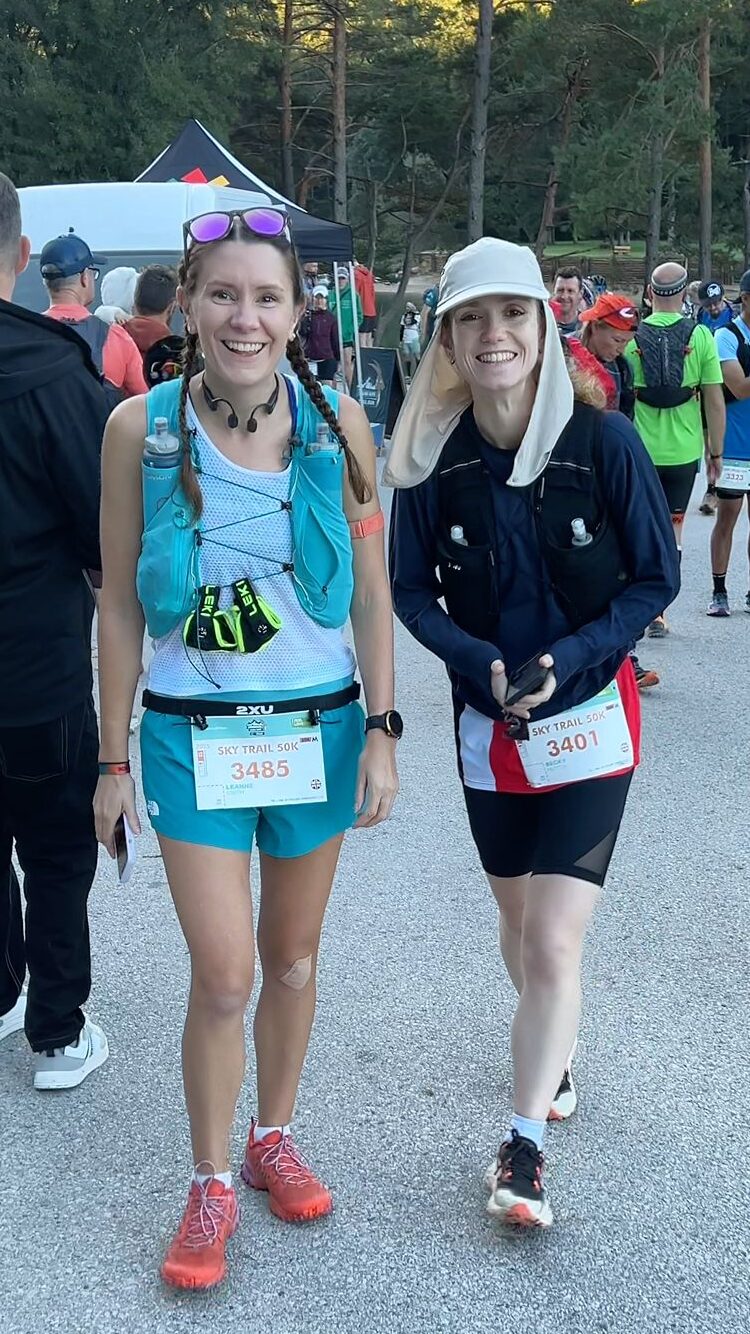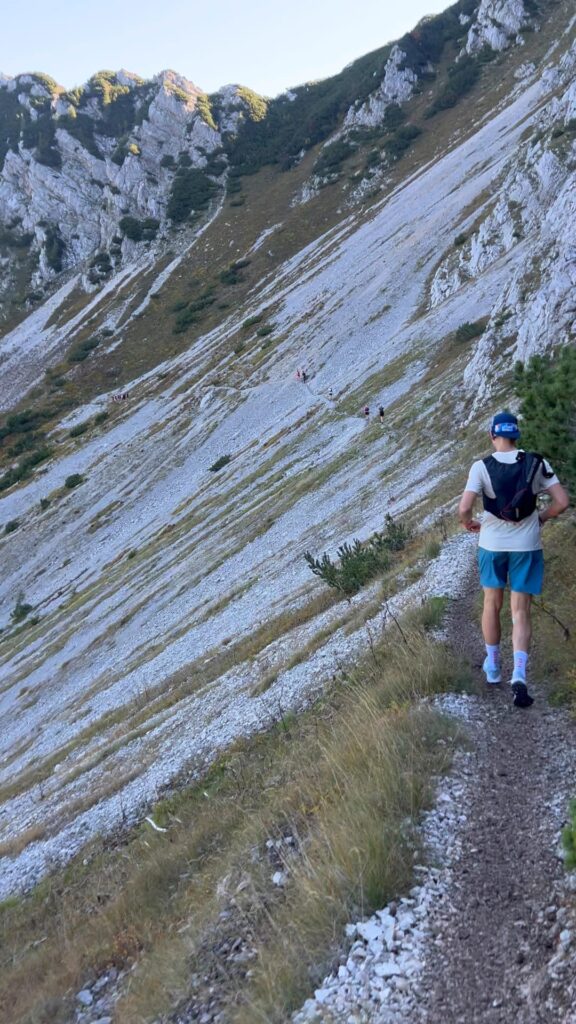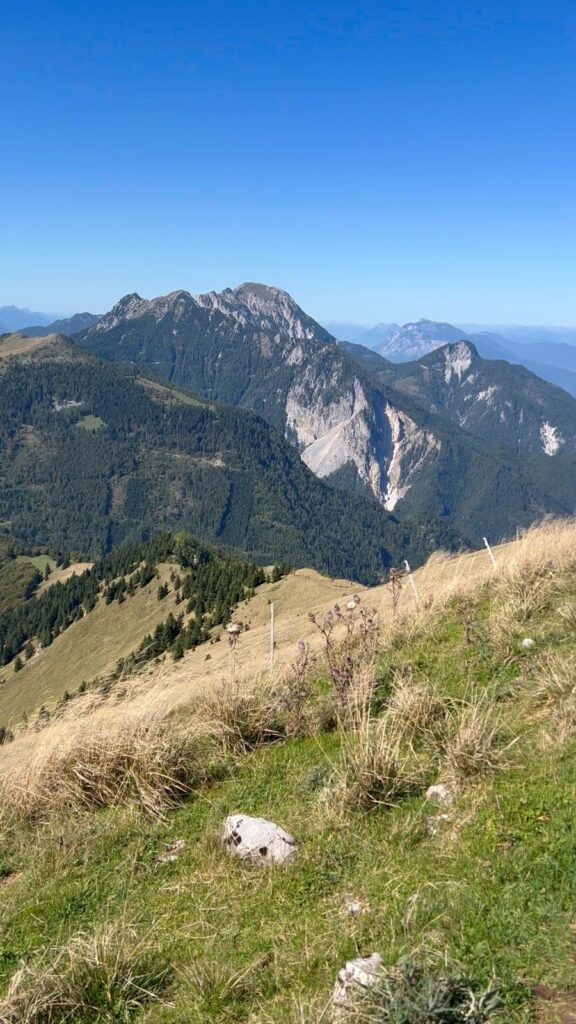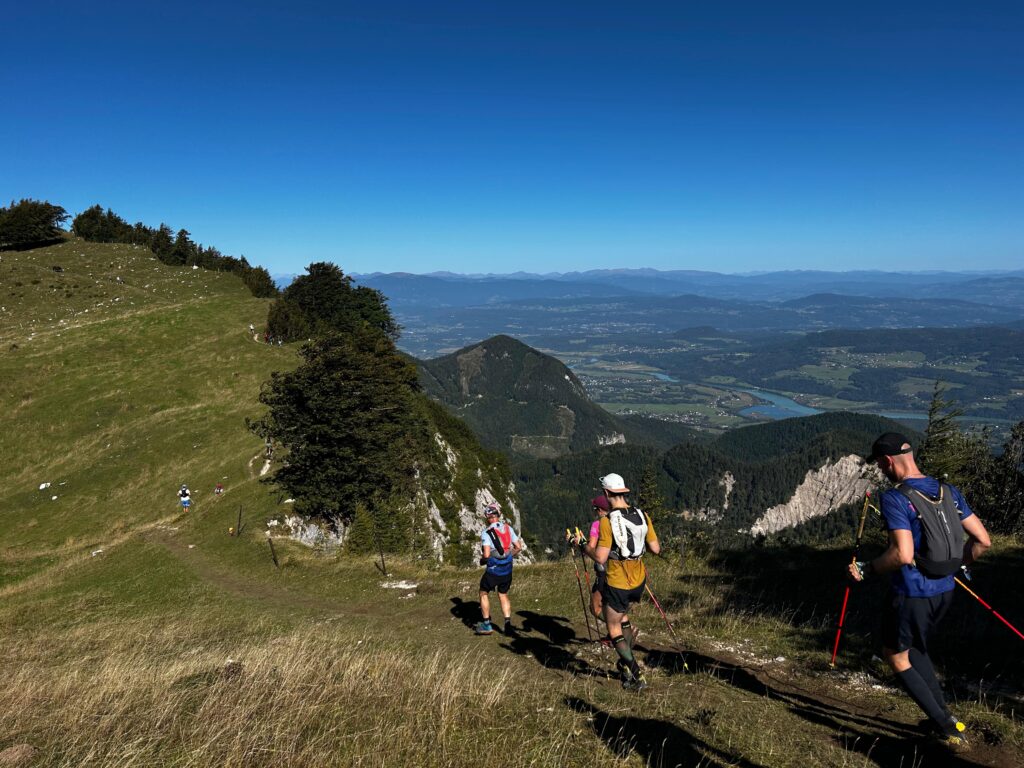For Christmas last year, writes Becky Hutton, I received a book – Run: Races and Trails around the World. I’d picked through the pages, gazing at photographs of stunning locations across the world with running routes that ranged from 5km trails to road marathons to ultra endurance trail runs. I’d struggled with niggles and injuries for the last few months of 2024, and heading into 2025 I was hopeful to start running again. In January 2025, I returned home, tired and hungry after another trip to the gym, having spent 2 hours doing some sort of interval elliptical session in place of a run. I remember thinking I’d overdone it on a slightly sore hip, but I was so fed up with what felt like a period of endless injuries that I’d kept going anyway. I just missed running. One of those evenings, my friend (and fellow runner) Leanne phoned me in utter excitement, “I’m entering a 50k, do it with me?!”. I laughed. A 50k felt like a pipe dream, but it was something I’d always wanted to do. There was a page in my book about the location of the route – and looking at the pictures of the Slovenian Alps and lakes, I couldn’t help myself.

Returning to running and building up some fitness, was a task that I felt overwhelmed at the thought of trying to face alone. As a result, I spoke with both Nick and Parky about running, x-training, and strength and conditioning. I recognised that with the background of injuries I had, and the struggle I’d had to start running consistently again without getting injured, I knew I needed to change something.. I stuck religiously to a training plan that involved running less than I’d been used to, incorporating more x-training to supplement easy runs, and adding in a few strength sessions a week. Within a few months I felt the benefits; x-training meant that I could safely increase volume without overdoing the impact with too much running. Applying progressive overload by slowly increasing the weights I was lifting in the gym meant that I started to get stronger and, despite running much less than I’d thought possible whilst training for an ultra, I found myself feeling fitter than I ever had before. Consistency seemed to be paying off!

In May 2025, Leanne and I completed the UTS 25k – a UTMB organised race that loops up and around Snowdon. This was my first real foray into true mountain trails, and whilst I enjoyed every second of the route, I fell over a couple of times coming downhill, and this knocked my confidence. It was an important lesson in patience (and a test of my competitiveness); I got carried away with a group of more experienced mountain runners, and lost concentration of my footing in the second half of the race. Although I finished strong and was pleased with how I ran, the experience made me wary of running in unpredictable mountainous terrain.

A few months later, Leanne and I shivered on the start line in Slovenia; at 7:00 it was around 6 degrees outside and I was losing the ability to feel my fingers. We were eager to get going, knowing that the first third of the JAT trail is almost entirely uphill. Setting off at 8, around 1000 runners left the lake at Zirovnica to the tune of some traditional Slovenian music that was apparently the soundtrack of choice for the race start. It wasn’t a typical start line – most runners were hiking or jogging; within the first 3 miles everyone was relying on poles for assistance. Hiking up, I lost Leanne in the swarms of people. Knowing I had 50km to cover, I was moving conservatively and didn’t want to feel too fatigued early on, but found it a bit of a mental game to rein myself in. I went straight through the first aid station, and proceeded to get slightly confused about the distance I had to cover before reaching the second – this became the longest 5 miles of uphill that I think I have ever done. The route took us up the Karavank Ridge, through dense forest with narrow paths that became a queue of us. It was frustratingly impossible to pick up speed or overtake anyone. Eventually, we emerged at the top, and the path took us around rocky ridgelines that were a little more runnable. 11 miles in, I reached the second aid station, pausing to refill water. I was slightly disheartened at the fact it had taken nearly 3 hours for me to cover so little distance, and my mood didn’t improve with the steep hill that I faced as I left the station. I’d memorised the elevation profile of the route so that I knew what to expect, I just hadn’t appreciated that the climbing could begin to feel as relentless as it did.
I started to pick up pace after leaving the second aid station; although I was much slower on the steepest sections of downhill tracks. I allowed others to overtake me, pulling over to the side of the trails if I felt people coming up behind me. On the very technical sections it became a mantra to repeat to myself, “don’t fall over, don’t fall over” as the memory of falling at Snowdon and the fear of breaking a bone helped me keep better control over my speed. Picking my way over these harder bits of terrain, the route opened out onto a much more friendly gravel track. I started to run. This was probably my favourite section of the entire route – I pushed a little faster, and started to overtake other runners as we gradually descended from the ridge. It was shaded, I felt strong, I knew I’d got plenty left in me to give, and I began to appreciate the level of fitness I had and my ability to continue running as we approached the next aid station.
I couldn’t really feel the heat of the day at the peak of the mountain ridge, but coming down into the town of Dovje where the third aid station was located, it started to hit. “How far to the next aid station?” I heard another runner asking, but everyone was too focussed on their own track to be able to think logically through an answer. I was a little distracted by the excitement at knowing I was over halfway through the run, and running along an exposed section of road, the intensity suddenly amped up a notch. Most of the climbing was done, which meant the next obstacle – the heat – would be the thing that made the distance feel tougher. The first spectators of the race welcomed us into Dovje, cheers and cowbells broke through from a mile away and gave everyone the push to get there. I picked up more water and began the next 8 mile section, spurred on by the crowds and knowing that the terrain would be a lot better for running on.

This was the point at which I made a potentially unwise decision. Taking on water at Dovje was helpful, but I’d started thinking about electrolytes too, given the heat. I’d got them stashed away in my running pack, so they weren’t readily accessible without taking off the pack and digging them out. Knowing that it would hold me up to try and find them, I let my impatience win and decided I’d be fine with water – at least until the next aid station. Coming out of Dovje, a short climb levelled out to make way for more running rather than climbing, and I found myself getting competitive. I started to overtake a few more runners, finding rhythm in my pace along the trail. The trail was much easier to run on now, and despite getting increasingly warm, it was a very fun section of the route with incredible views of the mountains. I seemed to be running fairly well, up until the last mile before the fourth aid station where I suddenly started to feel unusual. Everyone had been running for a while now, along a long flat section that was very exposed to the sun, and I’d felt myself losing energy more rapidly. The passing cyclists and walkers started to blur into one, and I started to take on more fuel, hoping that would help give me the boost I needed to get me to the next aid station.
It did. The final aid station of the route is “only” 5 miles from the finish – and at 28 miles in, I wanted to get the job done. The finish line was tantalisingly close, and the thought of “it’s just an RR10”, tempted me on without much of a pause. I knew that if it was relatively flat, I might be able to cover the rest of the course within an hour, assuming nothing went too wrong. That being said, I also knew that coming out of the last aid station there was a fairly big final climb, and I wasn’t sure how it would feel coming up and back down the hill. Confident that I was nearly done, I pushed the fatigue I was feeling to one side and set off, alternating hiking with jogging. I was no longer as cautious about conserving energy, and I started to overtake a few others as we headed up. Exiting a mountain road into some more isolated farm communities I was grateful for a young girl handing out water to us as I came through.
The downhill from this last climb was much more gradual, but became almost entirely forest tracks. Abundant in roots and a few fallen trees to clamber over, it was difficult to stay alert of the trip hazards. My impatience to finish had left me heading off a little fast and as a result, tiredness and heat became more of a battle. I started to count down the miles to the finish line in a bid to distract myself from the heaviness in my legs. The final 2 miles were the hardest; I slowed down as I emerged from the forest track into sunny Kranjska Gora. Through a car park, over a bridge, up some steps onto the main street – it felt like the longest half mile I’ve ever run, and the self-doubt crept in as a couple of runners overtook me. Part of me wanted to collapse at the finish line, the other part of me wanted to try and speed up. Some part of my legs woke up ever so slightly and the final few hundred metres became a little bit of a sprint. People lined the streets, but I became somewhat tunnel-visioned. I heard the commentator say my name as I rounded the final corner, and I crossed the line (although apparently didn’t realise it and kept going a few metres) in just under 7.5hrs.
In the aftermath of the race, the disbelief of it truly hit. Completing the run marked a huge achievement for me; the comeback from consistently being injured in 2024 was not easy, and I had found it difficult to trust the process at times. The thing about runners is that we’re often our own worst enemy. It’s so easy to overdo it, go too far too often or push a little too hard too frequently. We neglect significant components of training because the most fun part for us is to be outside running. Training for the ultra marked a change in the way I approach running. I learnt the value of consistency – not just with running, but with x-training, strength training, rest days, good nutrition, and proper sleep. Getting that balance right has allowed me to begin to unlock just how good running races can actually be. I have learnt when I’ve got the capacity to push myself, and when I’m a bit more tired and need to back off a little, and in this way I’m (slightly) less competitive with myself now. I don’t force myself to put more effort in or go further each week – progress is not linear, nor does it have to be – it’s showing up that counts more. These days, I know that rest days are just as important as training days; if I ‘skip’ a rest day and go running, I don’t have as much left to give at subsequent sessions. A few days of poor sleep or not fuelling myself well leads to some pretty tired out, unmotivated sessions. These are the basic foundations to feeling good when running, and they’re things I will continue to prioritise as part of training. But those are just my thoughts on it all. As for the JAT Sky Trail as an event? It was a fantastic day out and an epic route; nothing could have prepared me for the scenery. Maybe I’ll do another ultramarathon one day, but for now, a good cross country season lies ahead.
Beccy Hutton